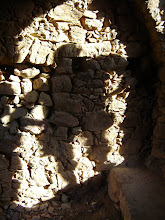The words on the left-hand side of the building read "Kindergarten und Volksschule" and on the right-hand side "Maternelle et élémentaire". You could have been forgiven for thinking you were in the German-speaking community of Belgian Wallonia, Alsace even, or a bilingual canton in Switzerland. But no, the official language here is Italian. The school was in Gressoney St. Jean, an alpine village that nestles high up in the Val di Gressoney, in the mountainous region of Valle d'Aosta, in the far north-west of Italy. Gressoney St Jean, its twin village of Gressoney la Trinité and Issime (Eischeme) form part of a small, anomalous German-speaking enclave on the southern flanks of the Pennine Alps, 100 kilometres north of Turin. Val d'Aosta, of course, is famous for the French patois which is widely spoken throughout the region. This "Sprachinsel" in the east of the region is less well-known however.
A Germanic language has been spoken in these villages for centuries, brought over the mountains in the early Middle Ages by settlers from the region of present-day Switzerland known as Valais (in German, Wallis). It is purported that these settlers travelled in small numbers across the high passes of the Alps to colonise unexploited valleys on the southern side of the mountains. They brought with them their language and traditions. The German dialect, known as Walser, has managed to survive to the present day in these isolated communities, despite being surrounded on all sides by a Francophone population and later, the dominant influence of the Italian langauge.
There were other German-speaking colonies too in these high mountain valleys, notably the community known as "Canton des Allemands" in Val d'Ayas, where the dialect was gradually swallowed up by the Francophone population.
The twin villages of Gressoney and Issime (dialect: Eischeme) are separated from each other by the French-speaking community of Gaby, so the two dialects developed along different lines. The language of the Walsers of Issime, Töitschu, is very archaic and similar to medieval German. The language of Gressoney, Titsch, is more similar to modern German.
It was a public holiday when I visited the village, so it had been overrun by day-trippers from Turin and Milan and Italian was, of course, the Lingua Franca. The Tourist Information Office (on the Liskam Waeg) unfortunately wasn't well stocked with information and the lady in charge spoke only Italian and French. However, she did present me with an interesting booklet giving a brief insight into the culture and language of this Walser community.
For more information on the Wasler community go to:










